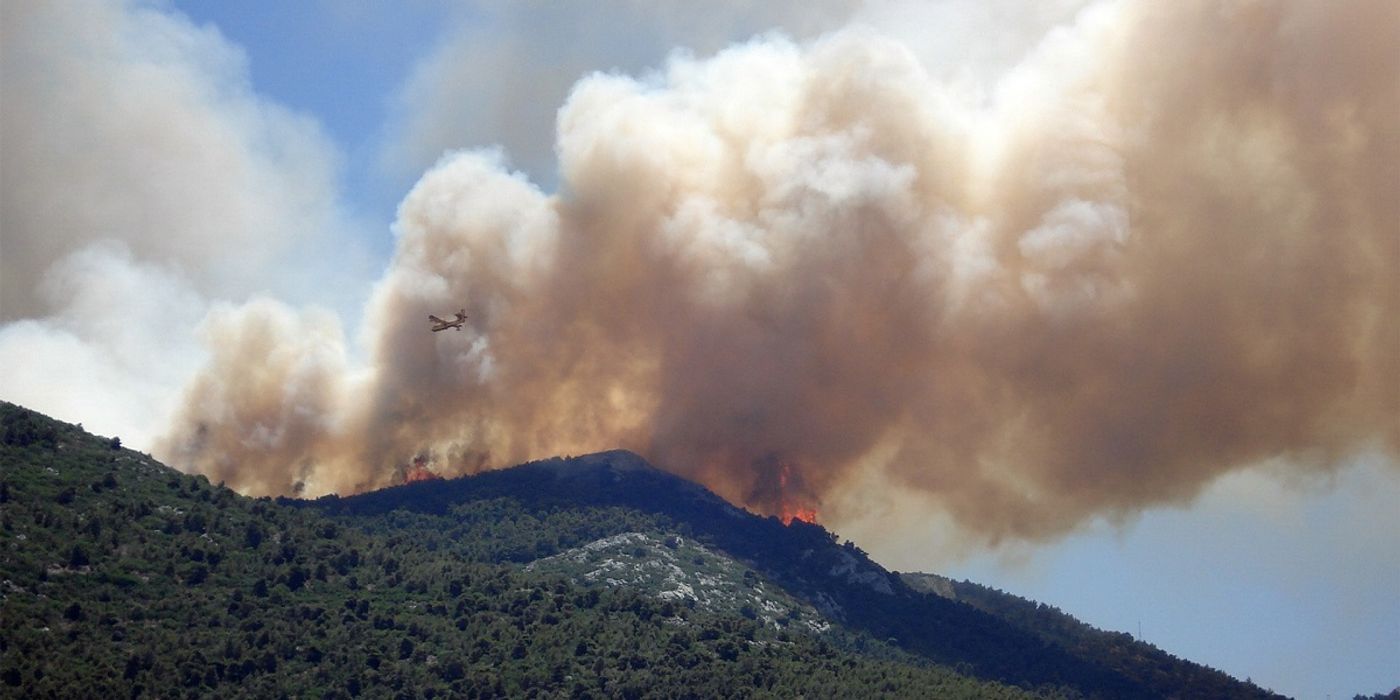Wildfire Effects on Air Quality
Wildfires are becoming a common occurrence in the Western US, and wildfires are expected to increase in severity and number in coming decades. Increasing wildfire activity is linked to increasing surface temperatures and earlier snowmelt in the spring caused by climate change. Research studying the effects of the last few years of wildfires is beginning to reveal the public health crisis we will be facing in the years to come.
Wildfires are a significant source of hazardous air pollution due to the many chemicals the smoke contains. Wildfire smoke can be more dangerous than other sources of air pollution because it cannot be regulated or filtered like vehicle or industry emissions can. The wide reach of the smoke plumes from landscape fires also creates problems. Smoke from western wildfires has been taken up by the gulf stream and moved thousands of miles to cities on the east coast of the US, and impacted air quality on the other side of the country. Air pollution moves like this, it cannot be contained in a single area and will spread to wherever the winds will blow.
Smoke from wildfires contains many chemicals like nitrogen oxides (which are precursors to ozone, another hazardous chemical), nitrous acid, and fine particulate matter (PM10 and PM2.5). Globally, wildfires contribute up to 64% of organic carbon emissions, 10% of global atmospheric aerosols, and 11% of PM2.5 concentrations, and 26.9% of total volatile organic compounds in the US. Combining the airborne chemicals from fossil fuel emissions with the chemicals from wildfires is a recipe for declining air quality and poor outcomes for human health.
Epidemiological studies have highlighted the link between wildfire emissions of PM2.5 to respiratory conditions like asthma. Most of the deaths and asthma emergency hospital visits occur outside of the western US, where most of our large landscape fires occur. The awareness of air quality conditions is important even far from areas where fires occur because harmful pollutants can travel long distances to heavily populated areas that are already facing poor air quality due to vehicle and industry emissions. The link between Covid-19 morbidity and wildfire air pollution is tenuous so far, but it gives us a glimpse into our potential future with lower anthropogenic emissions and increasing wildfires. As we face the climate crisis and hopefully reduce our vehicle and industry emissions and wildfires increase in intensity, wildfires will play a greater relative role in our air quality, and we need to be prepared to understand how it will affect us.
Sources:Atmospheric Chemistry and Physics Vol 21 , Atmospheric Chemistry and Physics Pre-print, GeoHealth, UC Riverside









